Black History
Opinion: Sha’Carri, H.E.R., and Kamala’s Olympian Dash to the Presidency
I know the Olympics are over. Consider this me just running through the tape. You know, the one at the finish line. (Remember as the 100-meter gold medalist Noah Lyles found out, a leg can beat you, but it’s the first torso to cross that counts). I’m still savoring all of the Olympics highlights.

By Emil Guillermo
I know the Olympics are over. Consider this me just running through the tape. You know, the one at the finish line.
(Remember as the 100-meter gold medalist Noah Lyles found out, a leg can beat you, but it’s the first torso to cross that counts).
I’m still savoring all of the Olympics highlights.
My favorite moment — even more than the wild Stephen Curry three that nailed the gold in men’s basketball–was the Women’s 4×100 relay and Sha’Carri Richardson. Far behind, as she got the baton for the anchor leg, Richardson was magic in motion. With a phenomenal burst of speed, she made up the lost ground in seconds. But it was her glance back at the smoked competition as she crossed the finished line that got me.
Unforgettable.
To top it off was the closing ceremony that included H.E.R., singing the “Star Spangled Banner,” our country’s national anthem. It was H.E.R. representing all of us — the Asian American Filipino/African American pop star a/k/a Gabriella Sarmiento Wilson of Vallejo, Calif.
She was the face of America, welcoming the next games to our nation where in 2028, the entire country will be closer to what California already is, a minority-majority state. Seeing the multiracial singer was the extension of an ideal theme that a world where people have a love interest in one another, will get along with each other.
It’s the hope of a world at peace beyond the Olympic zone.
KAMALA IN THE BAY AREA FOR $13 MILLION
As the closing ceremonies were relayed from Paris, another biracial icon was continuing her Olympian sprint to the presidency. Kamala Harris was back in the Bay Area to share her campaign joy with rich homies.
At the Fairmount in San Francisco, the tickets ranged from $3,300 to up to $500,000 — a sliding scale for the well-heeled. Far from the $5 dollar internet pitches that end up in your inbox daily.
There were some who gladly paid at the low-end forgoing a vacation to support a historic run to save democracy. Nearly 700 attendees offering up more than $13 million were reported on the inside, including high tech folks and politicos like attorney general Rob Bonta.
Outside of the event, Harris also drew the same type of Pro-Gaza protestors who have dogged her at events in Las Vegas and Detroit. “Killer Kamala, you can’t hide, we charge you with genocide,” was the chant, according to reports.
The protestors accuse Israel of genocide against the Palestinians but hold the Biden/Harris administration just as accountable for the tens of thousands who have died in Gaza.
Harris never saw the protestors on Nob Hill. But she saw them in Detroit, where she let the protestors have their First Amendment right, and then spoke directly them.
“If you want Donald Trump to win, then say that, otherwise, I’m speaking,” Harris said to cheers from supporters who drowned out the protestors.
It was as tough and as candid as Harris has been on any issue since she began her campaign.
For now, she is the joyful, feelgood Kamala, raising millions, staying on message, and “moving forward not backward.”
About the Author
Emil Guillermo is a journalist and commentator. See him on YouTube.com/@emilamok1. Or at www.amok.com
Activism
Oakland Post: Week of November 26 – December 2, 2025
The printed Weekly Edition of the Oakland Post: Week of November 26 – December 2, 2025
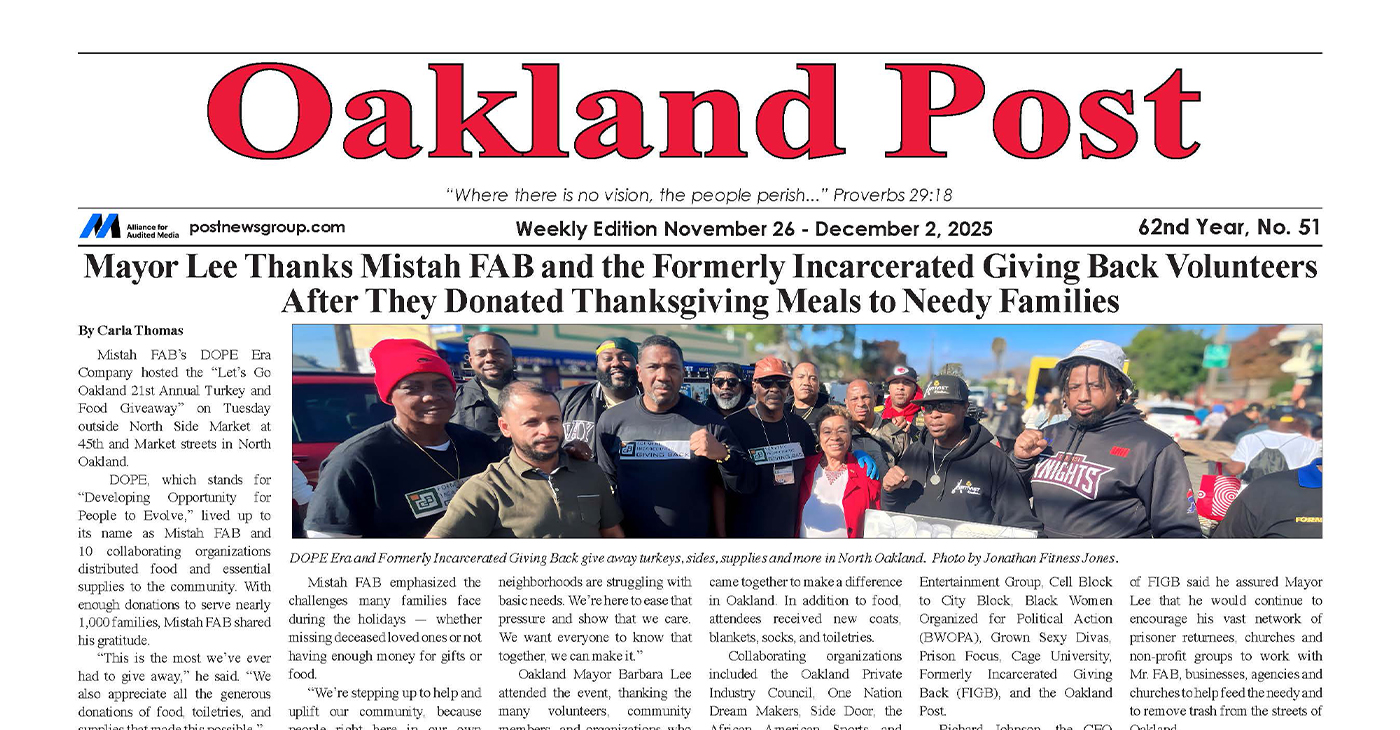
To enlarge your view of this issue, use the slider, magnifying glass icon or full page icon in the lower right corner of the browser window.
Activism
Oakland Post: Week of November 19 – 25, 2025
The printed Weekly Edition of the Oakland Post: Week of November 19 – 25, 2025
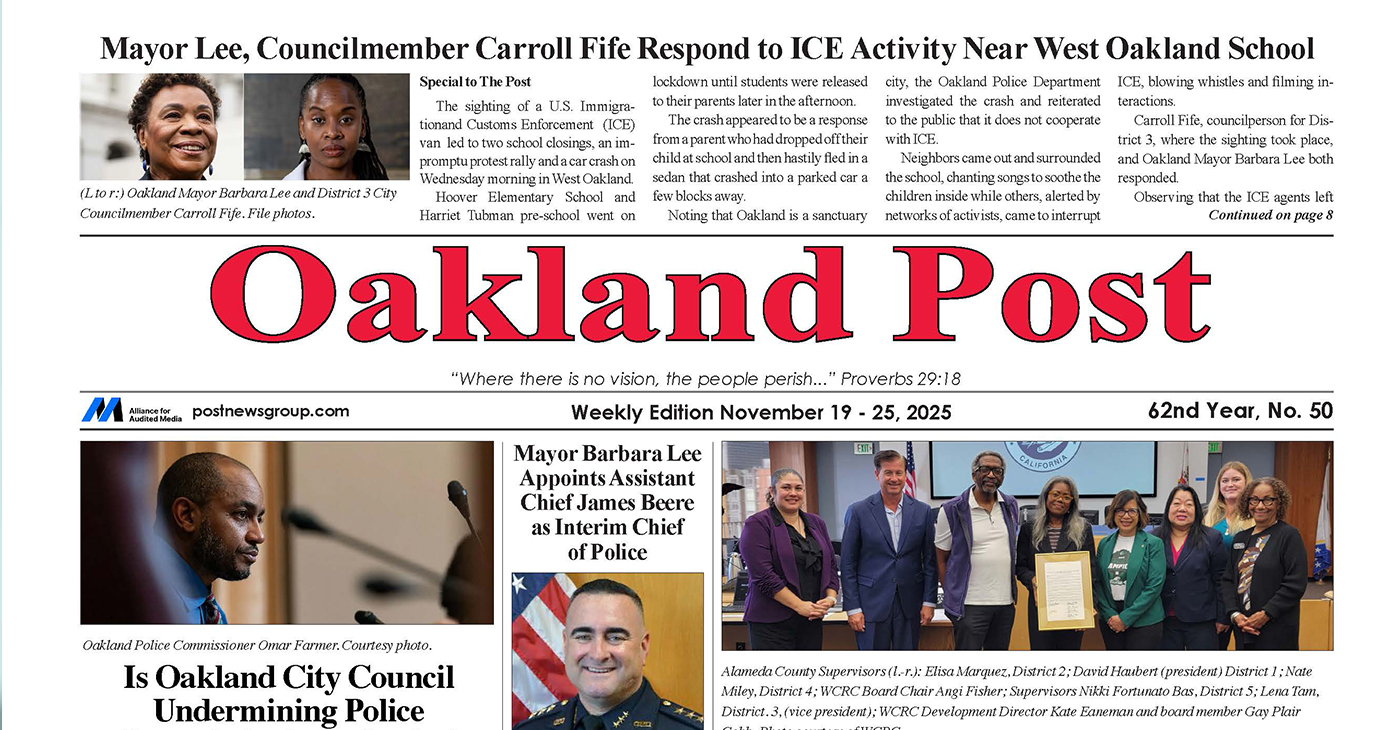
To enlarge your view of this issue, use the slider, magnifying glass icon or full page icon in the lower right corner of the browser window.
Activism
IN MEMORIAM: William ‘Bill’ Patterson, 94
Bill devoted his life to public service and education. In 1971, he became the founding director for the Peralta Community College Foundation, he also became an administrator for Oakland Parks and Recreation overseeing 23 recreation centers, the Oakland Zoo, Children’s Fairyland, Lake Merritt, and the Henry J. Kaiser Convention Center.
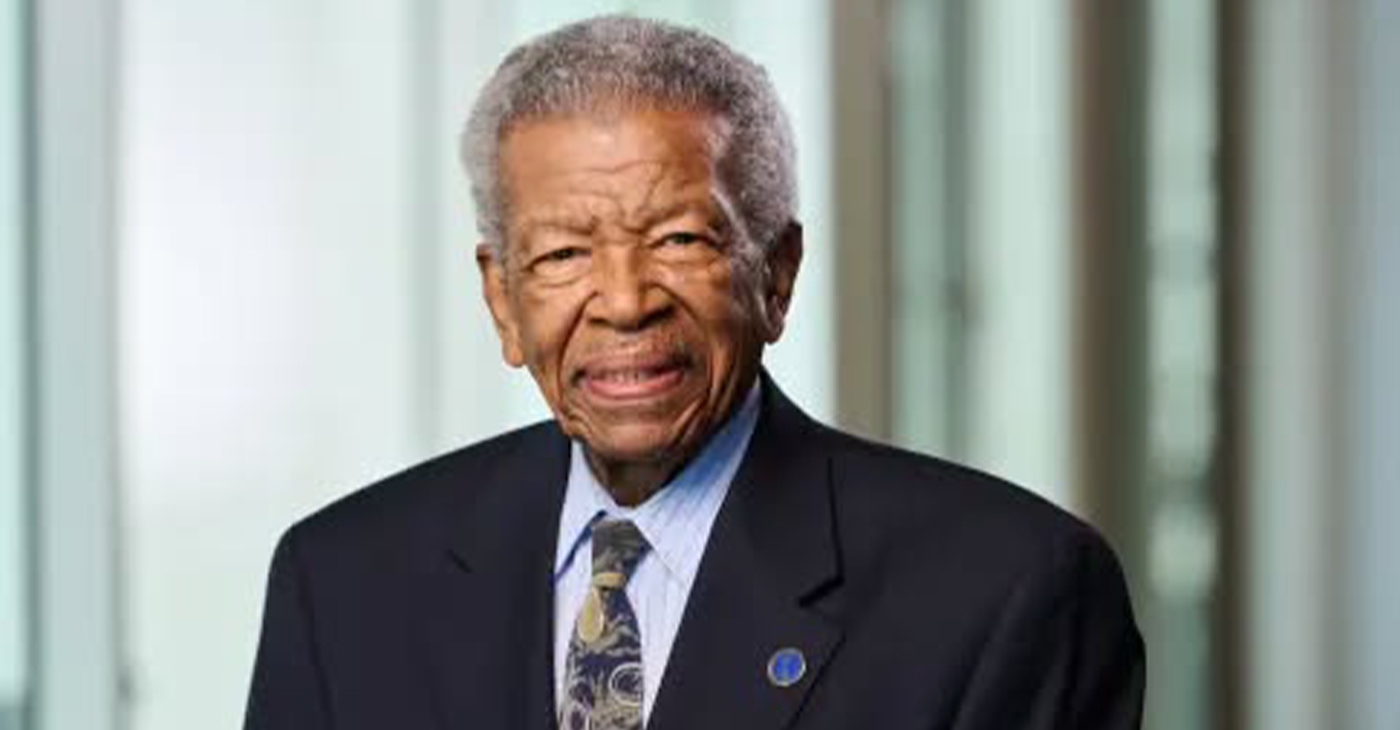
William “Bill” Patterson, 94, of Little Rock, Arkansas, passed away peacefully on October 21, 2025, at his home in Oakland, CA. He was born on May 19, 1931, to Marie Childress Patterson and William Benjamin Patterson in Little Rock, Arkansas. He graduated from Dunbar High School and traveled to Oakland, California, in 1948. William Patterson graduated from San Francisco State University, earning both graduate and undergraduate degrees. He married Euradell “Dell” Patterson in 1961. Bill lovingly took care of his wife, Dell, until she died in 2020.
Bill devoted his life to public service and education. In 1971, he became the founding director for the Peralta Community College Foundation, he also became an administrator for Oakland Parks and Recreation overseeing 23 recreation centers, the Oakland Zoo, Children’s Fairyland, Lake Merritt, and the Henry J. Kaiser Convention Center.
He served on the boards of Oakland’s Urban Strategies Council, the Oakland Public Ethics Commission, and the Oakland Workforce Development Board.
He was a three-term president of the Oakland branch of the NAACP.
Bill was initiated in the Gamma Alpha chapter of Kappa Alpha Psi Fraternity.
In 1997 Bill was appointed to the East Bay Utility District Board of Directors. William Patterson was the first African American Board President and served the board for 27 years.
Bill’s impact reached far beyond his various important and impactful positions.
Bill mentored politicians, athletes and young people. Among those he mentored and advised are legends Joe Morgan, Bill Russell, Frank Robinson, Curt Flood, and Lionel Wilson to name a few.
He is survived by his son, William David Patterson, and one sister, Sarah Ann Strickland, and a host of other family members and friends.
A celebration of life service will take place at Henry J. Kaiser Convention Center (Calvin Simmons Theater) on November 21, 2025, at 10 AM.
His services are being livestreamed at: https://www.facebook.com/events/1250167107131991/
In lieu of flowers, donations can be made to the Euradell and William Patterson scholarship fund TBA.
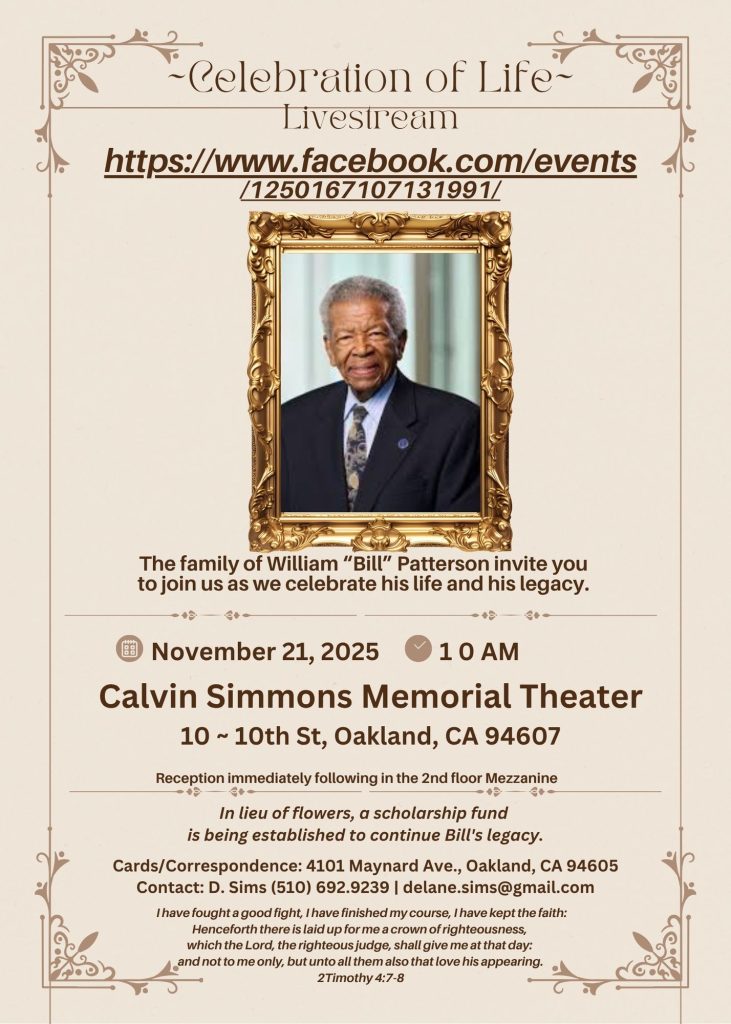
-
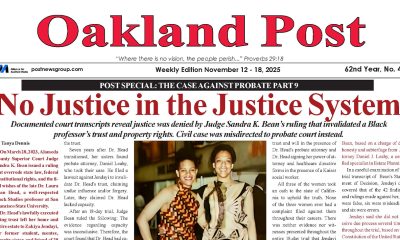
 Activism3 weeks ago
Activism3 weeks agoOakland Post: Week of November 12 – 18, 2025
-

 Activism4 weeks ago
Activism4 weeks agoOakland Post: Week of November 5 – 11, 2025
-
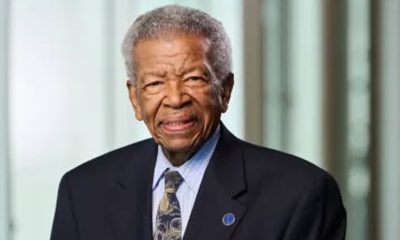
 Activism2 weeks ago
Activism2 weeks agoIN MEMORIAM: William ‘Bill’ Patterson, 94
-

 Activism3 weeks ago
Activism3 weeks agoHow Charles R. Drew University Navigated More Than $20 Million in Fed Cuts – Still Prioritizing Students and Community Health
-

 #NNPA BlackPress3 weeks ago
#NNPA BlackPress3 weeks agoThe Perfumed Hand of Hypocrisy: Trump Hosted Former Terror Suspect While America Condemns a Muslim Mayor
-

 #NNPA BlackPress3 weeks ago
#NNPA BlackPress3 weeks agoProtecting Pedophiles: The GOP’s Warped Crusade Against Its Own Lies
-

 Bay Area3 weeks ago
Bay Area3 weeks agoNo Justice in the Justice System
-

 #NNPA BlackPress4 weeks ago
#NNPA BlackPress4 weeks ago2026 Subaru Forester Wilderness Review: Everyday SUV With Extra Confidence
























































